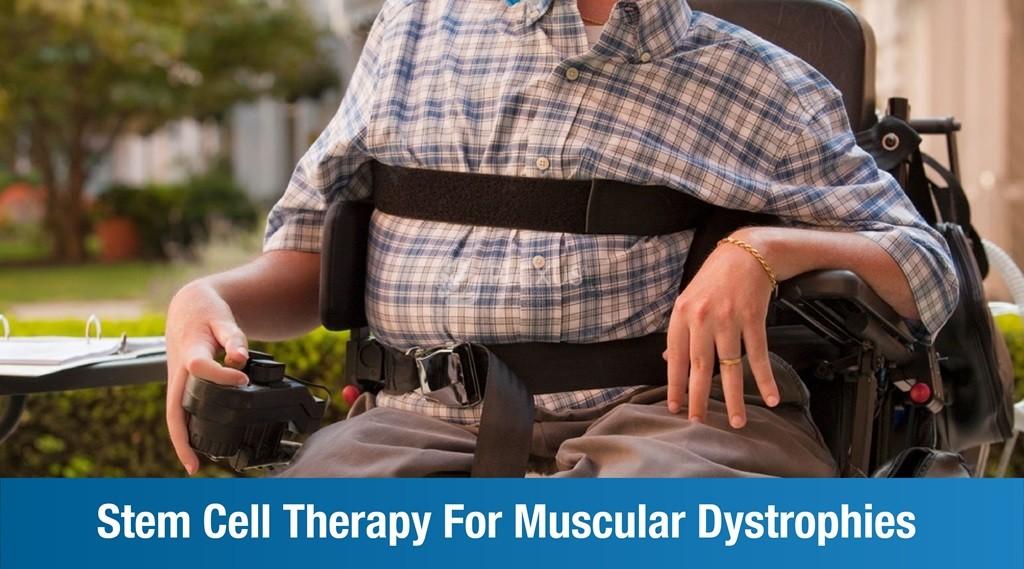
Muscular dystrophies encompass a group of genetic disorders that affect muscle function and strength. It is characterized by progressive muscle degeneration and weakness. Its symptoms include – difficult walking, atrophy, contractures, dysphagia, speech issues, waddling gait, limited range of motion, frequent falls, and more. Duchenne Muscular Dystrophy (DMD) is one of the most prevalent and severe forms.
Where conventional treatments are fairly limited when it comes to managing the progressive nature of these disorders, Plexus Neuro and Cell Research Center offers advanced regenerative rehabilitation featuring Cell therapy, physical therapy, occupational therapy, speech therapy, orthopedic interventions, nutritional support, and respiratory support for patients with muscular dystrophy. This blog provides a comprehensive understanding of Cell therapy for muscular dystrophies, with a focus on the treatment of Duchenne Muscular Dystrophy.
Understanding Muscular Dystrophies: A Genetic Conundrum
Muscular Dystrophy (MD) falls under the broader category of neuromuscular diseases, impacting the structure and function of muscles. One of the key characteristics of MD is the gradual replacement of healthy muscle tissue with fibrous and fatty deposits. Over time, this leads to a decline in muscle strength and function.
MD is typically caused by mutations in genes that produce proteins essential for maintaining the integrity of muscle fibers. These mutations interfere with the normal structure and functioning of muscle cells, leading to a cascade of degenerative changes. Other causes include:
- Gender (muscular dystrophy is most common in males)
- Protein deficiency
- Family history
- Environmental factors
There are various types of muscular dystrophy, each with its unique genetic basis and clinical features, they all share the common characteristic of progressive muscle wasting. Duchenne muscular dystrophy (DMD) and Becker muscular dystrophy (BMD) are two of the most common forms. DMD, for example, is caused by a mutation in the dystrophin gene, while BMD results from mutations in the same gene but with different consequences. DMD is particularly debilitating and affects approximately 1 in 3,500 to 5,000 male births.
Muscle weakness in MD is progressive, often starting in specific muscle groups such as the legs or pelvis. This weakness can cause challenges with motor skills, walking, and even performing simple everyday tasks. Children with muscular dystrophy may experience delays in reaching developmental milestones, especially crawling and/or walking. As the disorder advances, the child may also develop a distinctive waddling gait, and have balance and coordination issues.
It is important to keep in mind that the MD extends beyond skeletal muscles. Respiratory muscles can get affected too, leading to breathing difficulties, especially in more advanced stages. In some forms of MD, cardiac function may be compromised because of the weakening of the heart muscle.
Read more about the stages of MD here.
Read about the types of MD here.
Why Cell Therapy?
Conventional treatment approaches to managing muscular dystrophies are typically focused on symptom alleviation and supportive care. Although physical therapy, corticosteroids, and orthopedic interventions aim to improve quality of life, they are unable to effectively address the underlying cause of muscle degeneration. This is where Cell therapy comes in.
Cells, with their unique ability to differentiate into various cell types, offer the potential to regenerate damaged muscle tissue. Cells aim to address the root cause of muscle degeneration while also alleviating symptoms. Let’s focus on Cell therapy for DMD.
Cell Therapy for Duchenne Muscular Dystrophy
At Plexus, Cell therapy for DMD involves the administration of healthy Cells to replace or repair damaged muscle cells. We use mesenchymal Cells (MSCs) for the procedure. Below are the potential benefits of Cell therapy for muscular dystrophies, especially DMD:
- Muscle regeneration: MSCs can differentiate into muscle cells, contributing to the regeneration of damaged tissue.
- Reduced inflammation: MSCs possess anti-inflammatory properties, potentially reducing the chronic inflammation associated with DMD.
- Immunomodulation: MSCs can modulate the immune response, thereby minimizing immune-mediated damage to muscle tissue.
Cell Therapy in India
Plexus Neuro and Cell Research Center has steadfastly emerged as the leader for Cell therapy in India. Our unique regenerative rehabilitation programs have been tailored to manage a wide variety of neurological, neurodegenerative, orthopedic, and musculoskeletal conditions. We follow an interdisciplinary approach that involves Cell therapy, physiotherapy, occupational therapy, speech and language therapy, orthopedic support, nutritive care, and more.
Our centers in Bangalore and Hyderabad are equipped with state-of-the-art infrastructure as well as a team of award-winning Cell specialists with a combined clinical experience of over 35 years.
FAQs
What is the most effective treatment for muscular dystrophy?
The most effective method to manage muscular dystrophy involves a multidisciplinary approach, comprising Cell therapy supported by physical therapy, occupational therapy, orthopedic interventions, speech therapy, and additional therapies depending on the severity of symptoms.
Can muscular dystrophy be cured with Cell therapy?
Cell therapy focuses on alleviating symptoms, while simultaneously improving quality of life and functional abilities.
What is the latest cure for muscular dystrophy?
Plexus’ regenerative rehabilitation program involving Cell therapy, physical therapy, occupational therapy, speech therapy, and other therapies is the most advanced intervention to manage muscular dystrophy in India.
Can you live a long life with muscular dystrophy?
Yes! Individuals with muscular dystrophy can lead fulfilling lives, as long as they receive timely diagnosis, intervention, and supportive care. Proactive management, including physical therapy, respiratory support, and orthopedic interventions, can enhance the quality of life.
How long do muscular dystrophy patients live?
Life expectancy of muscular dystrophy patients depends primarily on the specific type of MD and severity of the condition. Although some forms are more severe and may lead to a shorter lifespan, most are milder and allow individuals to live into adulthood and beyond. Timely diagnosis, as well as medical and therapeutic interventions can significantly contribute to improved life expectancy for many patients.










